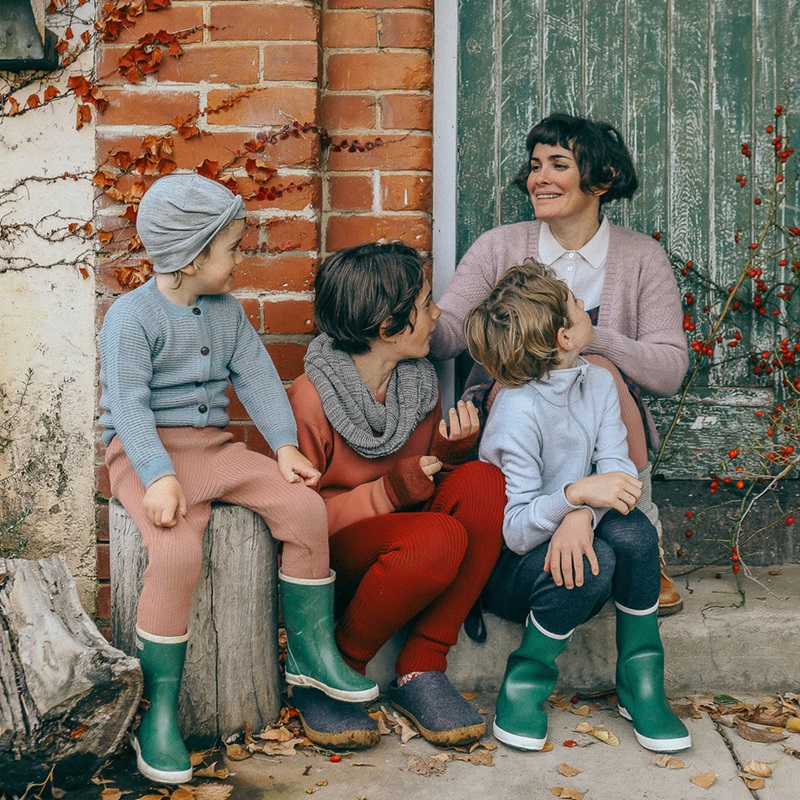As the source of 81 percent of the world’s Merino wool, Australia is quite familiar with this superfine fibre and its qualities, and is happy to share it with the rest of the world. Used for centuries in the production of garments, this wool brings together comfort, style, and performance. Renowned for its softness, durability, and unique natural properties, merino wool offers numerous advantages, particularly for the delicate skin and active lifestyles of children.
Is Merino Wool Good for Kids?

Unlike synthetic materials, this wool is entirely natural, making it hypoallergenic and gentle on delicate kids’ skin. Its remarkable softness ensures that the child will feel cosy and snug, enhancing their comfort during any activities or sleeping. It’s nothing like some of the scratchy wool jumpers you might remember from your childhood. On the contrary, the soft and silky Merino childrens clothing has a smooth outer layer, and it is suitable even for children suffering from skin conditions. This softness is attributed to the fine diameter of merino wool fibres, which are much finer than those of coarser wool varieties. As a result, children can wear merino garments without experiencing any discomfort or itching, making it ideal for those with sensitive skin or allergies. This exceptional comfort is one of the primary reasons parents opt for merino kids clothing. Clothes made from 100% Merino wool are not only safe but extremely comfortable, offering plenty of benefits.
Temperature Regulation
Merino wool is renowned for its exceptional temperature-regulating properties, making it suitable for children in various climates and seasons. Unlike synthetic fabrics that trap heat and moisture, Merino wool fibres have a natural ability to wick away moisture from the skin, keeping children dry and comfortable in both hot and cold conditions. Moreover, merino wool acts as an insulator, providing warmth in cooler temperatures while remaining breathable to prevent overheating during physical activity.
Hypoallergenic and Skin-Friendly

For children with sensitive skin or conditions such as eczema, finding suitable clothing can be challenging. Merino wool presents an excellent solution due to its hypoallergenic properties, so merino baby clothes are ideal for the youngest ones. The fibres of merino wool contain lanolin, a natural substance that repels bacteria and dust mites, reducing the risk of allergic reactions and skin irritation. Additionally, Merino wool is less prone to static buildup compared to synthetic fabrics, further minimizing discomfort for children with sensitive skin.
Durability and Longevity
Parents are always looking for durable clothing options that can withstand the wear and tear of active children. Merino wool garments excel in this aspect due to the inherent strength and resilience of merino fibres. Despite its soft texture, merino wool is exceptionally durable and resistant to pilling, stretching, and tearing, ensuring that children can enjoy their clothing for extended periods without deterioration in quality. This durability also makes merino wool clothing a cost-effective investment for parents, as they require fewer replacements compared to less durable fabrics.
Odour Resistance and Easy Care

Another notable advantage of merino childrens clothing is its natural odour resistance. Merino fibres have a unique structure that prevents the buildup of odour-causing bacteria, even after prolonged wear. As a result, merino wool garments remain fresh and odour-free for longer periods, reducing the frequency of washing and prolonging the lifespan of the clothing. Additionally, merino wool is relatively easy to care for, as it can be aired out and air-dried without losing its shape or softness.
Sustainability and Environmental Impact
In an era where sustainability is increasingly prioritised, merino wool stands out as an eco-friendly clothing choice for children. Merino sheep, which produce the wool, are typically raised in natural, pasture-based environments, minimizing the carbon footprint associated with their farming practices. Furthermore, the wool is biodegradable and renewable, unlike synthetic fabrics derived from petrochemicals. By choosing sustainable kids clothes, parents can support sustainable farming practices and reduce their environmental impact.
How Do You Care For Merino Wool?

Proper care is necessary to guarantee that the apparel stays soft, cozy, and in outstanding shape. Avoid using typical, powerful detergents or bleaches on your Merino wool clothing as they will cause holes in the wool, compromising their integrity and lifespan. Here are some pointers:
• Regularly let the clothes air out. Because merino wool resists odours and has antibacterial qualities, it’s usually sufficient to air-dry the clothing for a day or two.
• If the garments appear dirty, give them a hand wash. Use a mild detergent that has been specially made for wool along with lukewarm water. Rinse the clothes completely after gently stirring the water to clean them. Avoid using fabric softeners since they might cause harm to fragile fibres.
• Let the clothes air dry. Avoid wringing or twisting them to remove excess water, since this can cause deformation. Instead, gently press the water out and lay flat on a clean, dry towel to air dry, and avoid hanging the clothes.
Takeaway

Merino clothing offers a myriad of benefits for children, ranging from comfort and health to sustainability and durability. Its softness, temperature-regulating properties, and hypoallergenic nature make it an ideal choice for children with sensitive skin or allergies. Overall, merino wool clothing provides a winning combination of comfort, performance, and sustainability for children of all ages.
